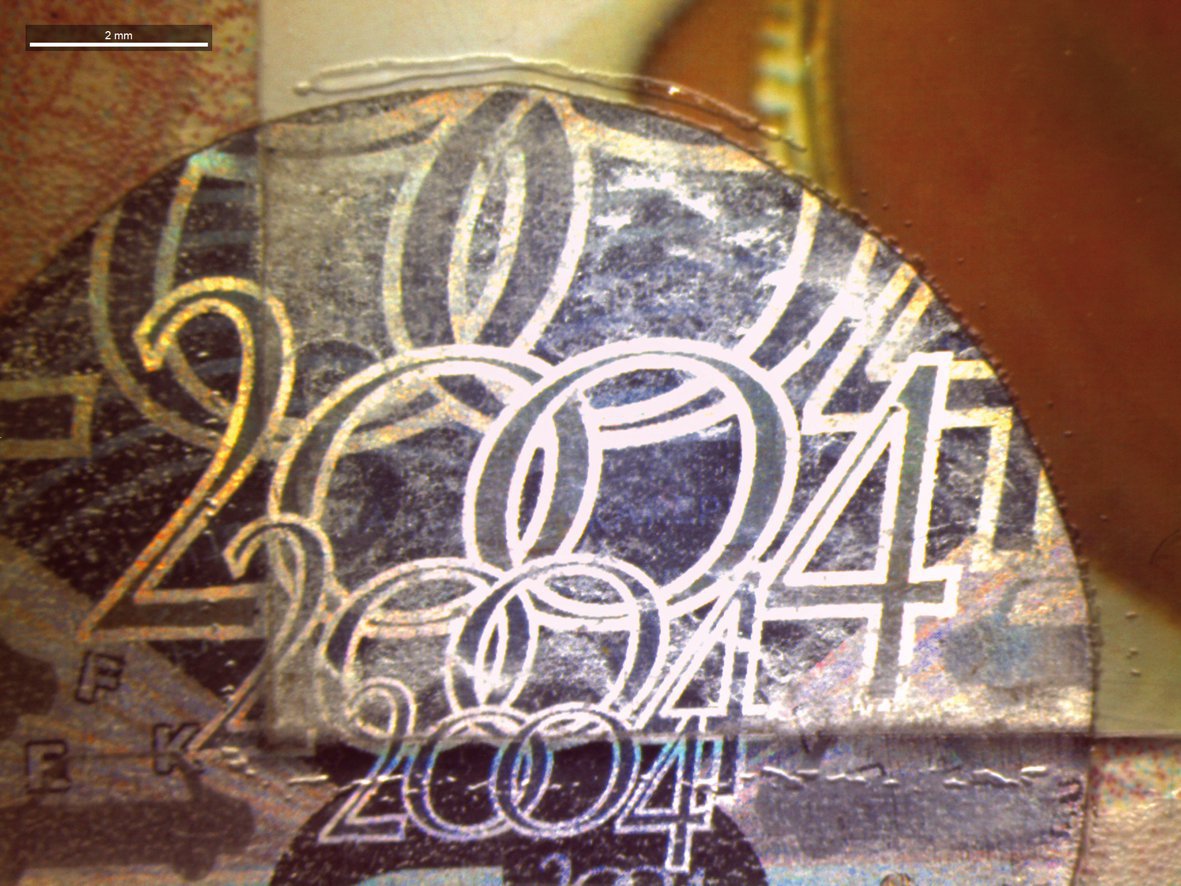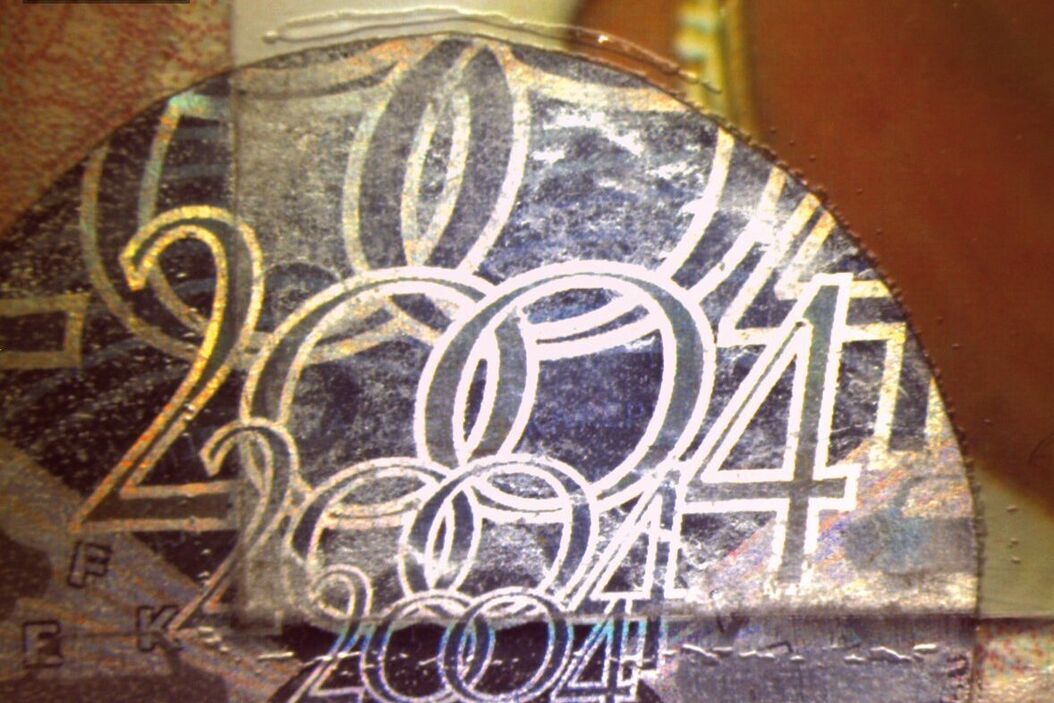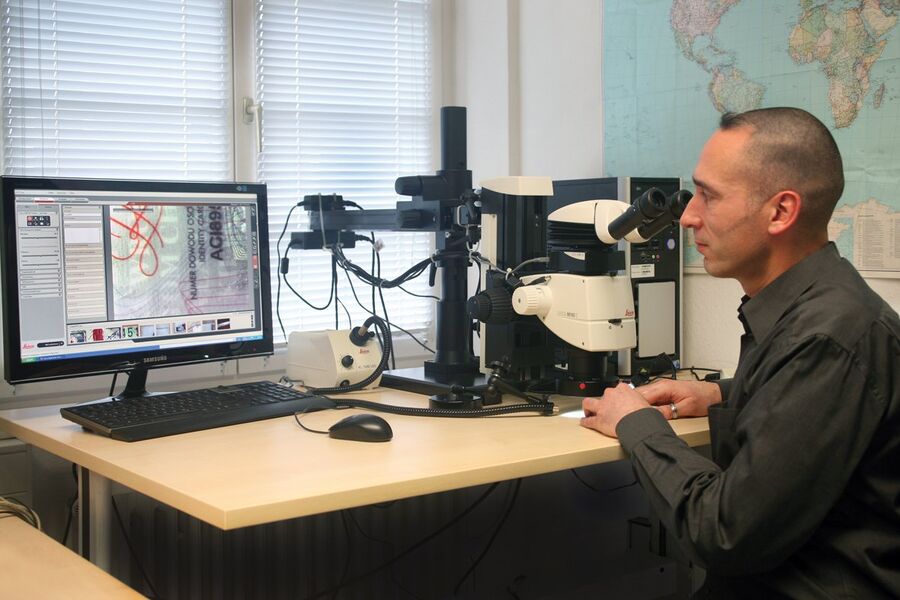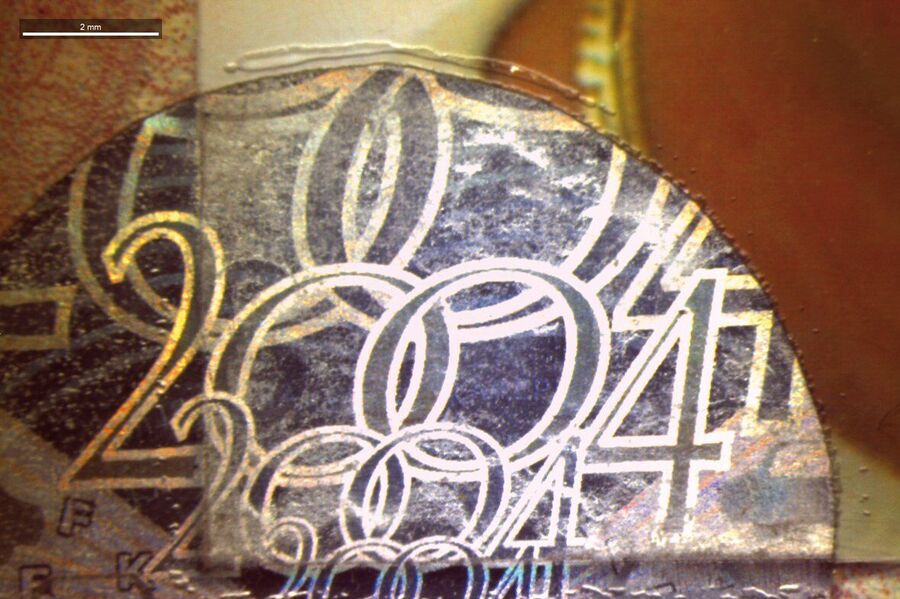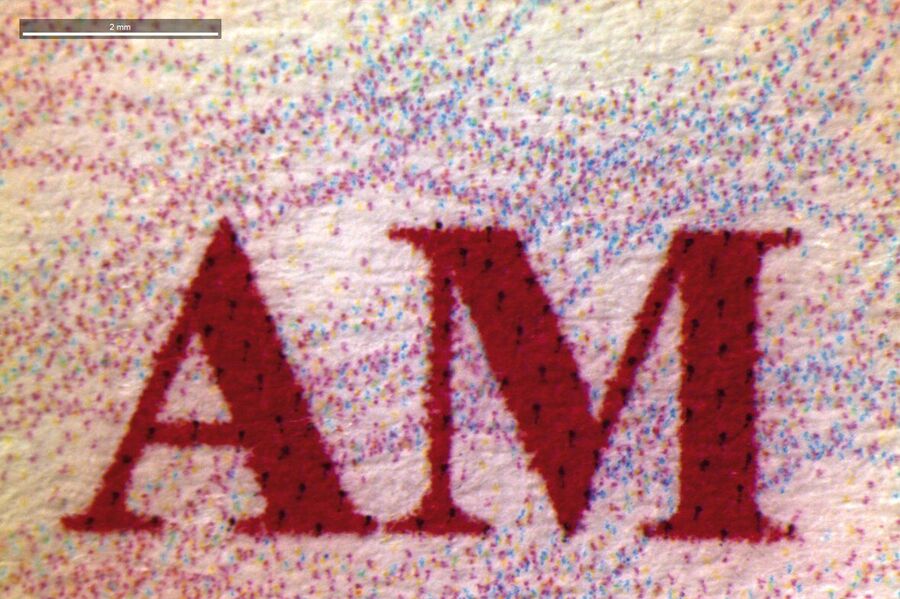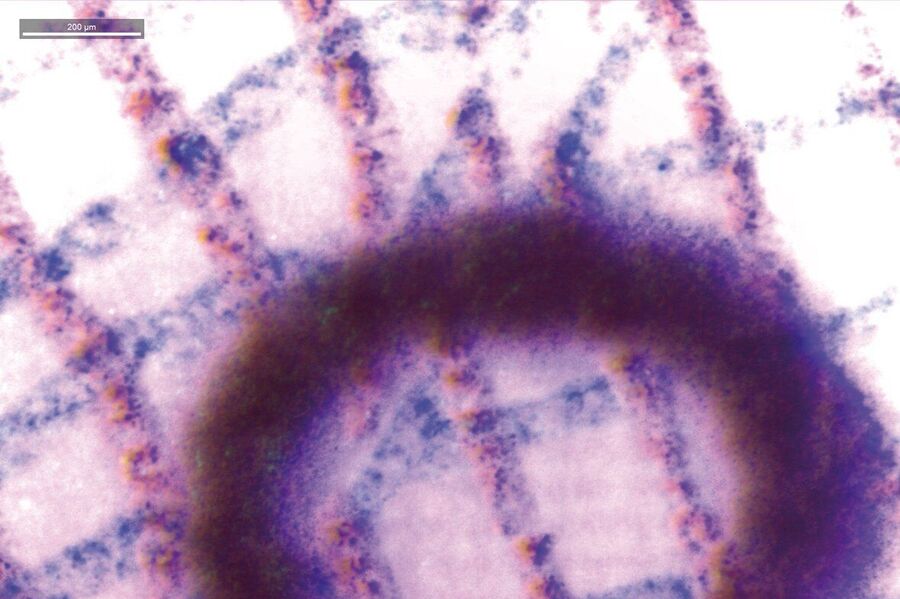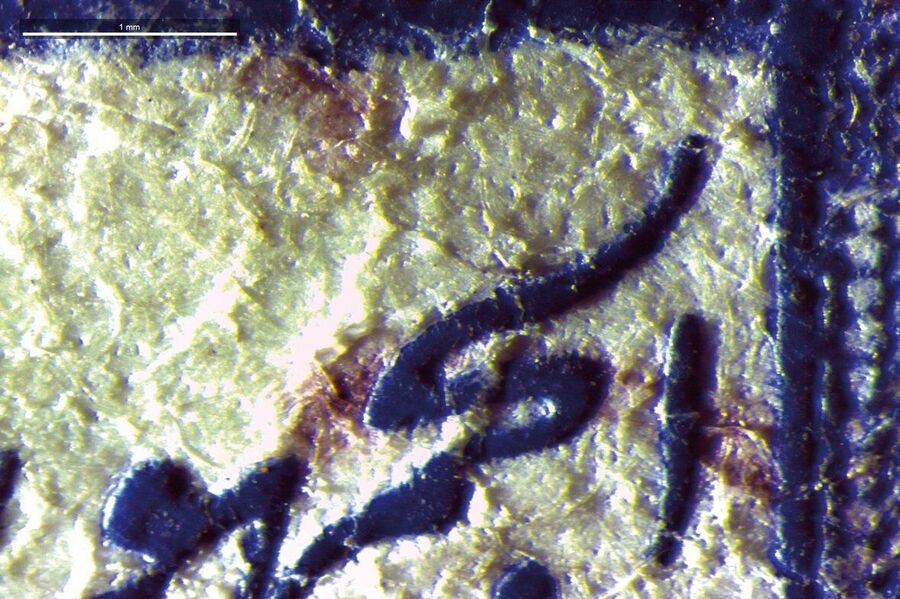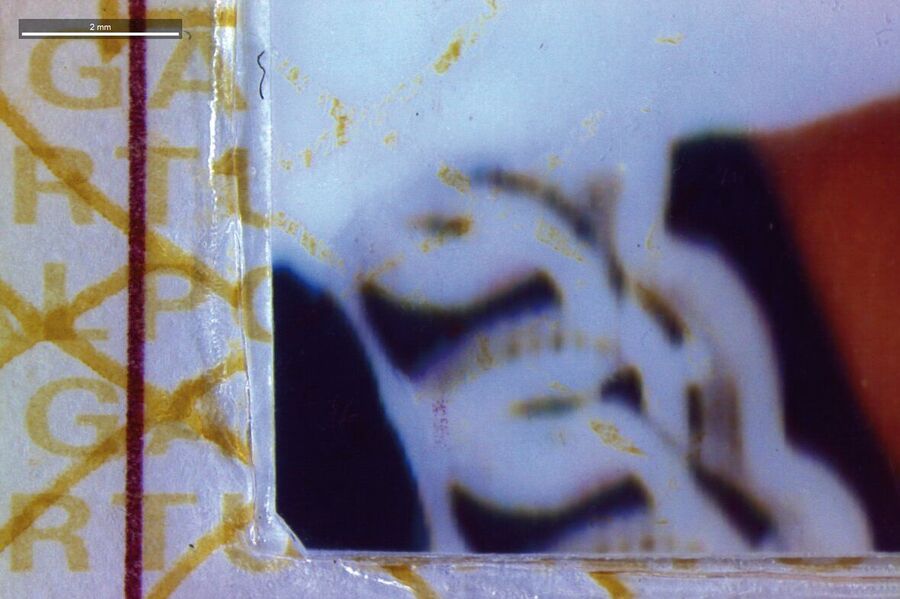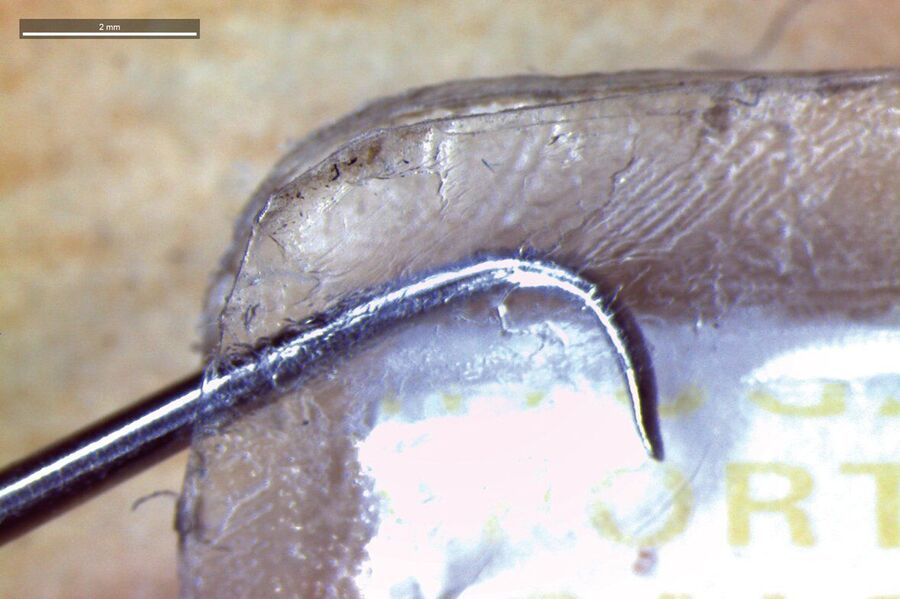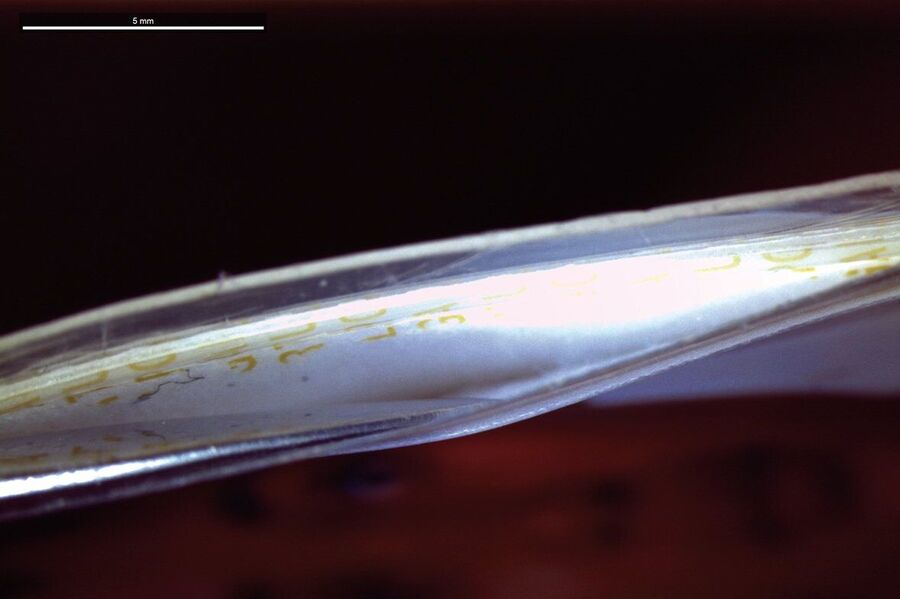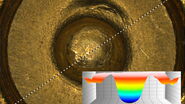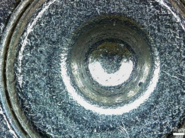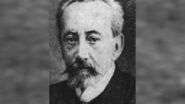A forensic expert who examines documents
When Martin Fischer arrives at his desk at the Regional Council of Stuttgart, Germany early in the morning, there are usually several suspicious ID cards already waiting for his trained eye. They have been confiscated by the police the night before and now Martin must examine them to determine their authenticity. The Chief Detective Superintendant became a certified expert on document forgeries, fulfilling a professional aim that was perfect for his technical bent.
Competent in all techniques
"Anything serving as a document, whether printed, signed or sealed on paper, plastic, or metal – a car registration plate, for instance – that constitutes an authorization or that can be forged to gain advantages, can land on my desk", says Fischer. "To detect professional forgeries and to furnish watertight evidence for my appraisals, I have to keep up with the latest technology." He knows all the document production techniques from traditional printing to the RFID (radio-frequency identification) chip and the new security criteria for ID cards.
From standard to strange
ID cards and driving licenses from all over the world account for roughly 80 per cent of his work, followed by birth certificates and documents for proof of nationality. But there are plenty of strange and exotic cases, as well. "I recently had a German certificate from a foreign Goethe Institute to examine. Another unusual assignment was to check whether high school math exam papers had been corrected afterwards to raise the quota", Fischer recounts.
"But my strangest case to date was a Senegalese single status certificate – a long, narrow strip of paper with a sort of writing I had never seen before. Before I can make any kind of statement, I am faced with the challenge of finding out what a document of that type is supposed to look like."
Although there is a personal story behind many document forgeries and the verdict for a defendant may depend on Fischer’s report, he always approaches cases with scientific rigor. "I don’t read the circumstances of the case until I have provided the results, so that I can carry out the examinations in a neutral and unbiased way", the expert emphasizes.
Counterfeiters – creative and amateurish
Even experts like Fischer never fail to be amazed by the skilled and professional way counterfeiters operate. ID cards and passports, as well as banknotes, are furnished with the highest security standards. Yet the more high-tech features an ID card has been given, the more the counterfeiters upgrade their equipment and may even try to forge RFID chips, holograms, and microtext or imitate special printing techniques, such as iris or intaglio printing or laser engraving. "Nevertheless", says Fischer, "counterfeiters never master all the security features equally well. They usually concentrate on a few particularly prominent features and put a lot of technology into attempts to perfectly reproduce them.
However, they then make amateurish mistakes with other features and that makes it easier for me to catch them. A common trick is to stick in holograms, chips, or other components from genuine ID cards. These collages are not always easy to detect with the naked eye or by running a finger over them – depending on the skill of the counterfeiter."
The microscope – the most important tool
The first step in every new case is always to classify the document as authentic or fake. If Fischer does not recognize the type of document, he searches in databases for a reference sample. The second step is to check for obvious signs of manipulation. His trained eye and sense of touch detect major signs of manipulation immediately, for example, if stamps have been rubbed out, numbers overwritten by hand or a new photo inserted in an amateurish way. This is followed by examination under a microscope. "I couldn’t do this job without a good microscope. Most cases are decided during the microscopic examination", Fischer says. He works with a high-performance stereo microscope which has a 16.5:1 zoom range and is equipped with a LED ring light, a flexible LED fiber optic guide for illumination, a swivel arm stand, and a digital camera.
3D image and LED illumination facilitate analysis
"The combination of good illumination and the 3D image perception of the stereo microscope are critically important for examining the finest details of the document’s surface structure. The details of better forgeries only show up when viewed with the microscope – for instance, attempts to imitate laser engraving, gravure or relief printing elements, or good collages where the chip, hologram, or serial number, etc. have been added afterwards. There are always discrepancies somewhere – at the edges, the transitions of fine linear printing patterns, or the orientation of the paper fibers", Fischer explains.
Looking for clues under the microscope
If only the photo has been exchanged, and this has been carefully done, typographic examinations or data readouts do not provide any useful information. The only way to find clues is by looking with the microscope. Sometimes, Fischer bends the ID card over the edge of the table to look under the edge of the photo that has been stuck in. If he finds torn fibers on the side of the ID card that do not correspond to the back of the photo, the case is clear.
"A false photo is still the most common way of manipulating ID cards", says Fischer. "With good forgeries it’s not always easy to find the clues. This is where I use the highest magnifications of the microscope. For basic examinations, the low zoom range between 20 and 30x is usually adequate."
Apart from the microscope, Fischer also uses other instruments to examine certain security features, e.g., inks or stamp dyes under UV (ultraviolet) or IR (infrared) light, or read out the personal data of the chip.
At the end of every examination, Fischer documents his results. His appraisal also includes microscope images with thorough annotations. "I naturally take care to formulate the report in such a way that there are no outstanding issues", Fischer emphasized. "I am rarely summoned to attend court proceedings and explain my reasons for an appraisal."
History of Forging Documents
The idea of forging documents is, no doubt, nearly as old as the use of official documents and contracts. Even the history of Europe might have taken a different course had it not been for the famous Donation of Constantine, forged around the year 800, which gave the Church of Rome and the Pope authority over all other local churches and a secular claim to power equivalent to that of the emperor [1,2]. The Vatican used this certificate to particular effect in the Middle Ages to defend itself against imperial paternalism.
It was not until 600 years later that it was proved that this certificate, allegedly issued by Constantine I in the 4th century, could not be authentic. Nowadays, forgeries of this scale would be impossible. However, the temptation to gain advantages by false or manipulated documents is still strong enough to keep the police and courts extremely busy pursuing crimes of this kind.
